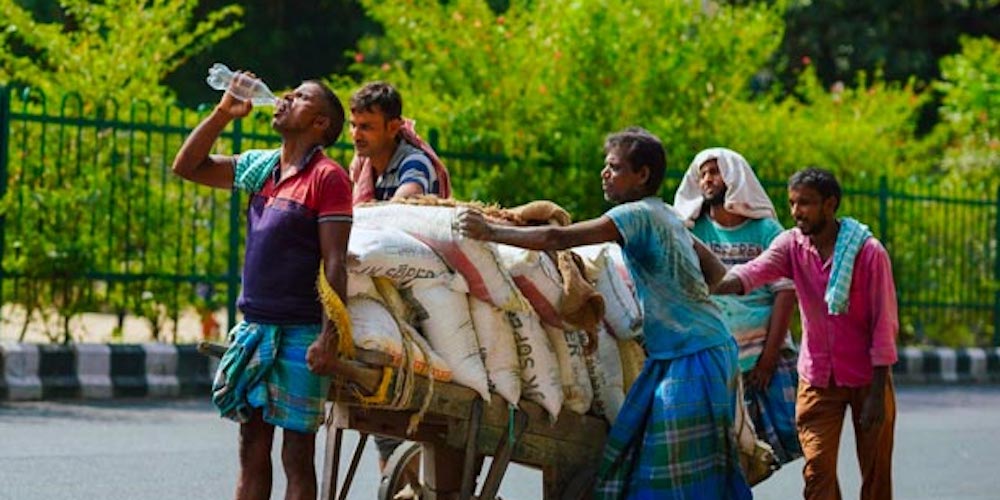Saving Workers and Labourers from Extreme Heat-Wave

The Union Ministry of Labour and Employment has asked all States and Union Territories to ensure preparedness and effective management of the impact of ensuing heat wave conditions on workers and labourers working in different sectors.
In a letter addressed to Chief Secretaries /Administrators of all States/Union Territories Union Labour Secretary, Ms Arti Ahuja, has emphasised upon the need to issue directions to the occupiers / employers / construction companies / industries to undertake necessary steps to mitigate the adverse effects of extreme hot weather.
Referring to the seasonal outlook issued by Indian Meteorological Department (IMD) for Hot Weather Season during current year which indicates above normal maximum temperatures over most parts of North East India, East and Central India and some part of Northwest India, the letter lists out various strategic steps required to be taken which include re-scheduling of working hours for employees/workers, ensuring adequate drinking water facilities at work places, making provision for emergency ice packs and heat illness prevention material to construction workers, coordinating with Health Department to ensure regular health check-up of the workers, adhering to Health Advisory issued by M/o Health & Family Welfare for Employers and Workers.
The letter also impresses upon the need to issue instructions to the Managements of Mines asking them to undertake immediate steps to make provision for rest areas, adequate quantity of cool water and electrolyte supplements near the workplace. Allowing work at slow pace in case the worker feels unwell, allowing rest times and flexible schedules to let workers do the hardest work during the coolest parts of the day with, assigning a two-person crew to perform work during extremely hot temperatures, ensuring proper ventilation in underground mines and making the workers aware of dangers from excessive heat and humidity and remedial measures are some of the other measures suggested.
Apart from factories and mines, the Labour Secretary has also impressed upon the need to pay special attention to construction workers, and brick kiln workers and to carry out adequate information dissemination at the Labour Chowks.
It may be noted that extreme weathers has been part of India’s reality for a few years now. Summers, particularly, have been unforgiving for all, but acutely so for workers engaged in outdoor, physical labour — forget work from home, they don’t even have the option of moving indoors even amid killer heatwaves.
But, these are the people who keep the wheels of the economy turning: Transporting our goods from point A to B, delivering services at the doorstep and building infrastructure. Most anyway live on subsistence-level wages.
Heat stress occurs at temperatures above 35 degrees Celsius in high humidity, according to the International Labour Organization (ILO). Such conditions limit work capacity and productivity. If body temperature rises above 40°C, it could lead to heatstroke, according to experts.
Heat stroke is the second most deadliest force of nature in India, killing over 20,000 people in the last 20 years according to government data. The most affected demographic group is men aged 30-45 years.
Informal workers work prolonged hours under the sun and don’t usually get immediate support or compensation if something untoward happens. The Modi-government is trying to change this scenario through many steps.
The government seems to be realising that the informal sector should be made climate-ready. All the more reason to do so as India is predicted to lose over 34 million full-time jobs in 2030 due to climate change, according to a report from the ILO.
Several states and cities have prepared heat action plans to guide extreme heat planning. For example, Odisha developed a website and an app to guide users to heat shelters and drinking water sources on highways.
Bihar has changed working hours for labourers under government schemes, closed markets in the afternoon and constructed roof structures in markets.
Gujarat has proposed cool roofs, which absorb less solar energy than a conventional roof, to beat the heat.



